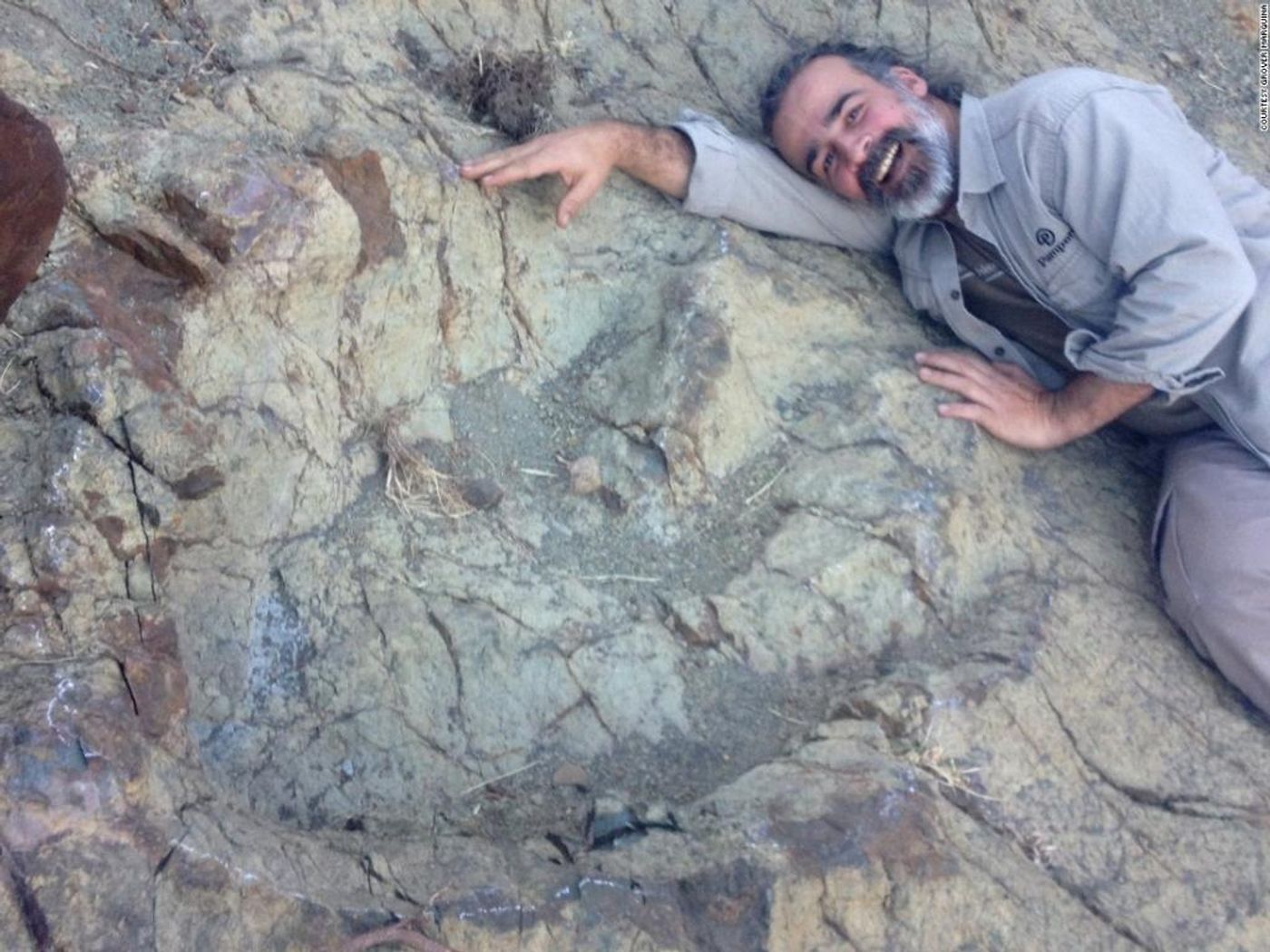Scientists Study Large 1.2-meter Dinosaur Footprint in Bolivia
Dinosaurs may not walk the Earth anymore, but they’ve left behind several clues to their existence millions of years ago. Among those are fossils, bones, and even footprints. Scientists are always coming across these clues, and one of the places in the world where these kinds of discoveries are common is South America.
Around 40 miles away from the city of Sucre in central Bolivia, a tourist guide found a large footprint that scientists are now saying came from a carnivorous dinosaur known as an Abelisaurus that was much larger than average.

Image Credit: CNN/Twitter
Although scientists estimate that these creatures may have averaged around 9 meters long, this footprint suggests the creature was anywhere from 12-15 meters long.
"This print is bigger than any other we have found to date in the area," Argentine paleontologist Sebastian Apesteguia said. "It is a record in size for carnivorous dinosaurs from the end of the Cretaceous period in South America."
The largest footprint was once about 110 centimeters in length, but this new one takes the cake at 115 centimeters in length. Scientists date the 1.2-meter footprint back as early as 80 million years ago, and it remains well preserved to this day.
The Abelisaurus probably closely resembled the Tyrannosaurus Rex in many ways, and bones recovered from the area suggest a similar body structure.
Finding hidden gems like these is important because it allows us to see the world through a different lens; one that lets us peer into the history of our planet and the creatures that once walked upon its surface.
Source: Reuters via Inqusitr








